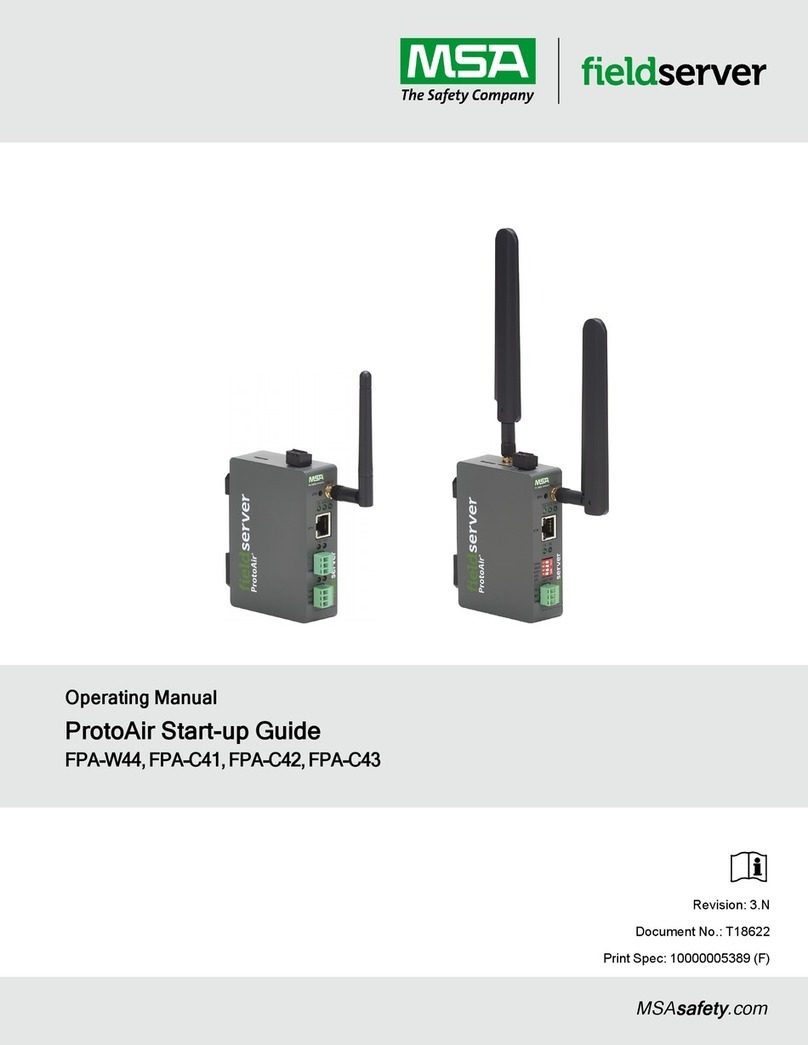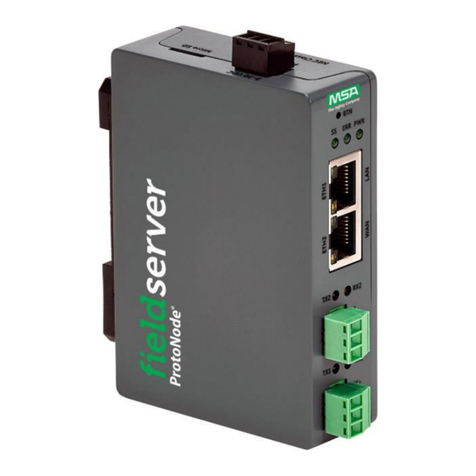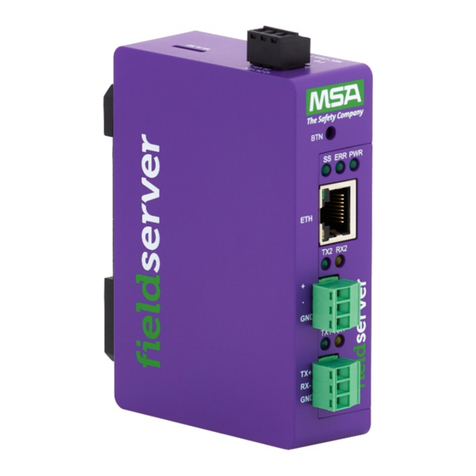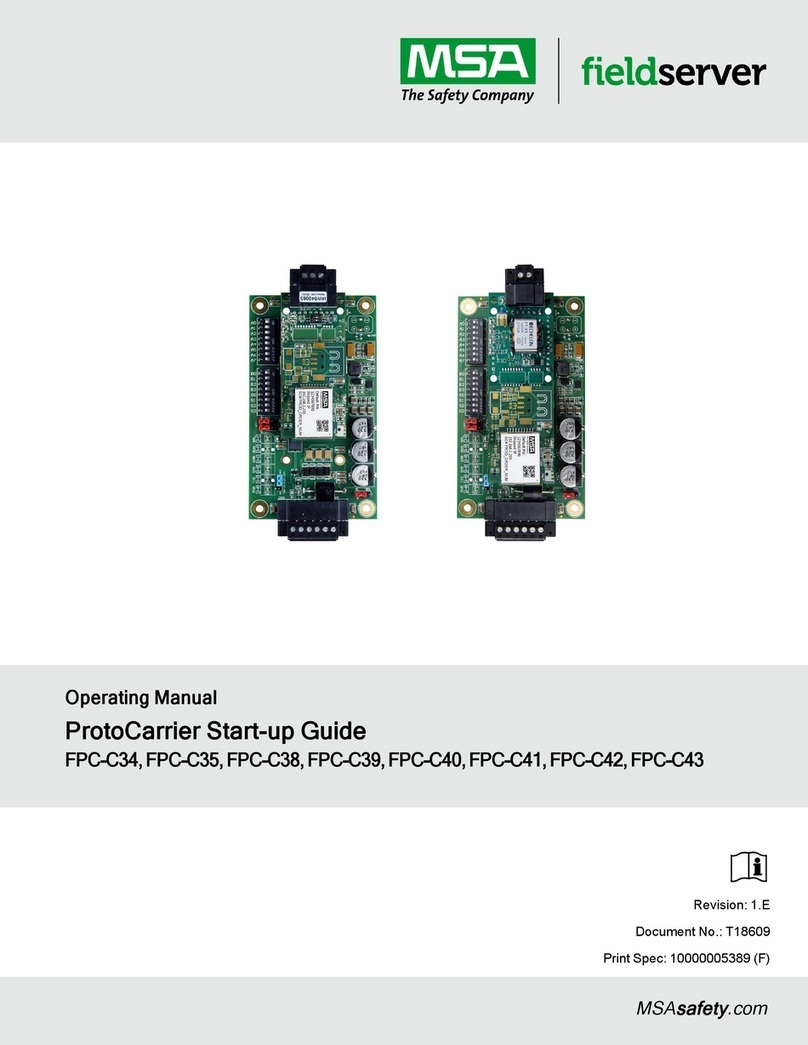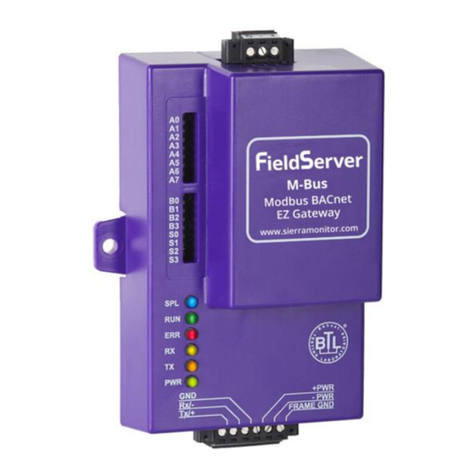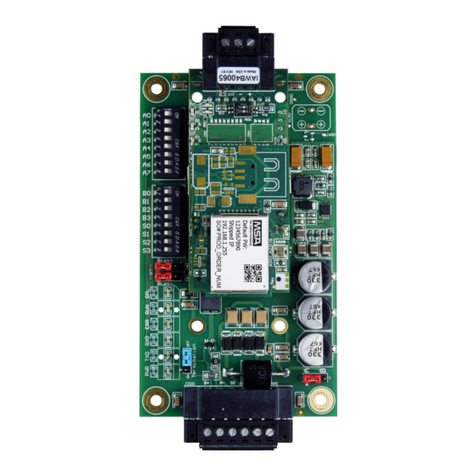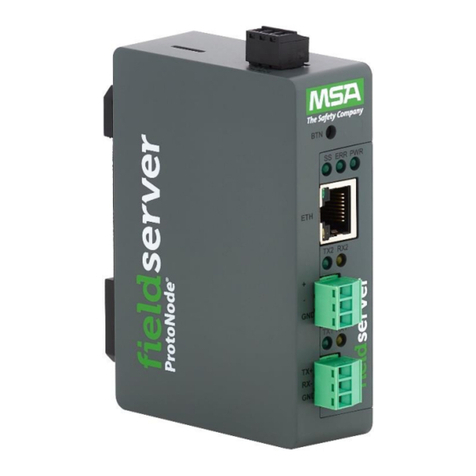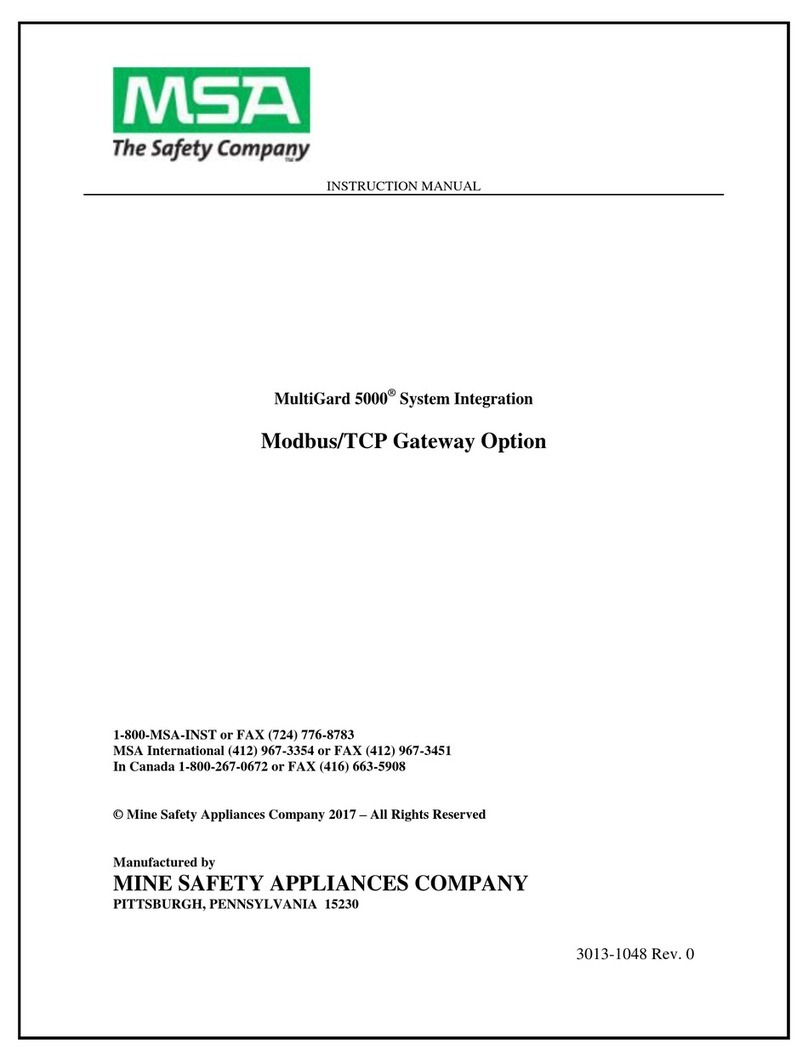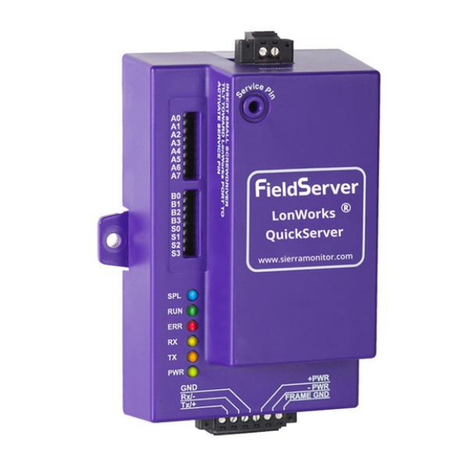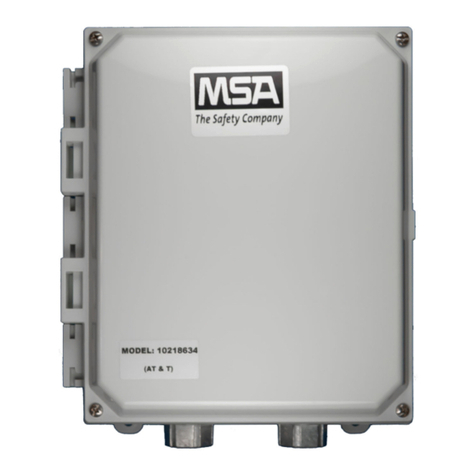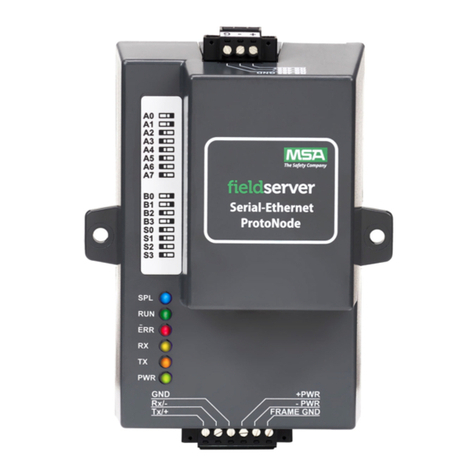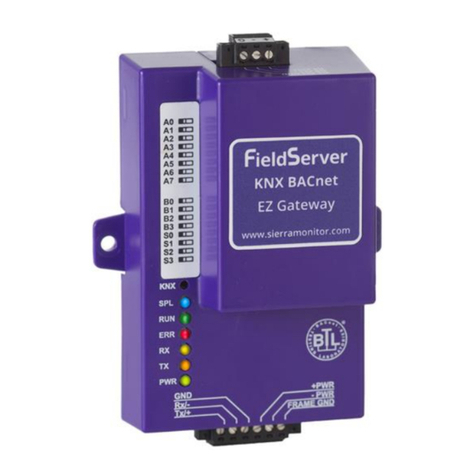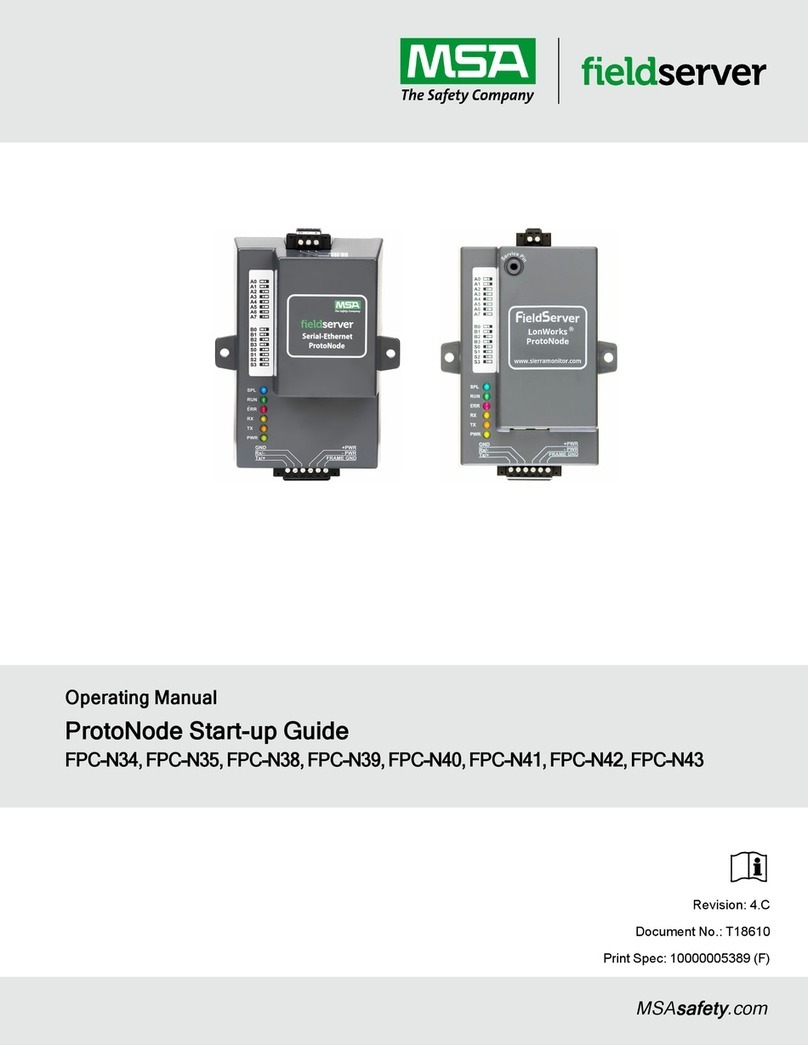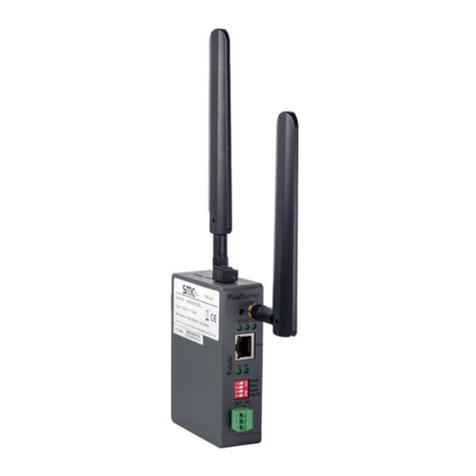QuickServer Start-up Guide 5
List of Figures
Figure 1: DIN Rail Bracket ............................................................................................................................7
Figure 2: DIN Rail Mounted...........................................................................................................................7
Figure 3: Bias Resistor DIP Switches...........................................................................................................8
Figure 4: Termination Resistor DIP Switch...................................................................................................9
Figure 5: R1 & R2 Connection Ports...........................................................................................................10
Figure 6: Ethernet Connection....................................................................................................................11
Figure 7: Required Current Draw for the Gateway.....................................................................................12
Figure 8: Power Connections......................................................................................................................12
Figure 9: Ethernet Port Location.................................................................................................................13
Figure 10: Web Server Security Unconfigured Window .............................................................................14
Figure 11: Connection Not Private Warning ...............................................................................................14
Figure 12: Warning Expanded Text............................................................................................................15
Figure 13: FieldServer Login.......................................................................................................................15
Figure 14: Security Mode Selection Screen................................................................................................16
Figure 15: Security Mode Selection Screen –Certificate & Private Key....................................................17
Figure 16: FS-GUI Landing Page ...............................................................................................................18
Figure 17: FS-GUI Page .............................................................................................................................19
Figure 18: FS-GUI Navigation Panel ..........................................................................................................19
Figure 19: Routing Settings.........................................................................................................................20
Figure 20: FS-GUI Network Settings ..........................................................................................................21
Figure 21: FS-GUI File Transfer .................................................................................................................22
Figure 22: FS-GUI Loading Files................................................................................................................23
Figure 23: Retrieve Configuration File........................................................................................................24
Figure 24: FS-GUI Connections Screen.....................................................................................................25
Figure 25: Generic Web App Page –First Login........................................................................................26
Figure 26: SMC Cloud Opt Out Warning Window ......................................................................................27
Figure 27: Welcome to SMC Cloud Email ..................................................................................................28
Figure 28: Setting User Details...................................................................................................................29
Figure 29: SMC Cloud Registration Message.............................................................................................30
Figure 30: SMC Cloud Registration –Installer Details ...............................................................................31
Figure 31: SMC Cloud Registration –Site Details......................................................................................31
Figure 32: SMC Cloud Registration –Gateway Details..............................................................................32
Figure 33: SMC Cloud Registration –SMC Cloud Account........................................................................32
Figure 34: Device Registered for SMC Cloud.............................................................................................33
Figure 35: SMC Cloud Login Page.............................................................................................................34
Figure 36: SMC Cloud Privacy Policy.........................................................................................................34
Figure 37: SMC Cloud Landing Page.........................................................................................................35
Figure 38: Diagnostic LEDs ........................................................................................................................38
Figure 39: QuickServer Landing Page........................................................................................................44
Figure 40: FS-GUI Page .............................................................................................................................44
Figure 41: FS-GUI Security Setup..............................................................................................................45
Figure 42: FS-GUI Security Setup –Certificate Loaded.............................................................................46
Figure 43: FS-GUI User Management........................................................................................................47
Figure 44: Create User Window..................................................................................................................48
Figure 45: Setup Users...............................................................................................................................49
Figure 46: Edit User Window ......................................................................................................................49
Figure 47: Setup Users...............................................................................................................................50
Figure 48: User Delete Warning .................................................................................................................50
Figure 49: FieldServer Password Update via FS-GUI................................................................................51
Figure 50: QuickServer Dimension Drawing...............................................................................................53
Figure 51: Specifications.............................................................................................................................54
Figure 52: SMC Cloud Connection Problems Message.............................................................................55

